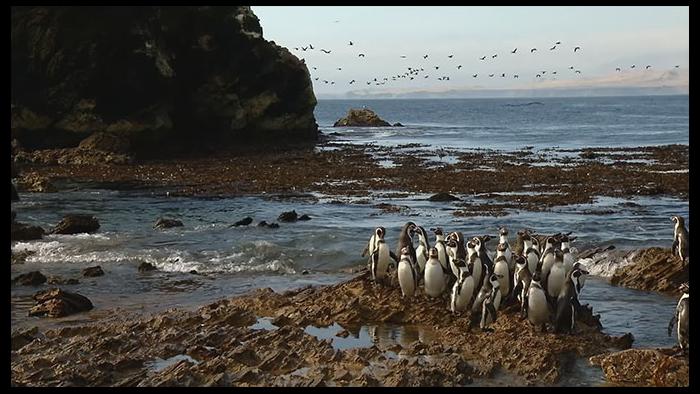On a tiny point on the southern coast of Peru, a small nature reserve and adjoining marine protection area is playing an outsize role in helping to sustain some seriously endangered marine and bird life.
Until recently, the site was used as guano-harvesting reserve, taking advantage of the fact that the droppings of thousands upon thousands of seabirds makes excellent fertilizer.
But for more than a decade, the Chicago Zoological Society has been working to collect data on the endangered species and launching community programs to help protect them.
“Punta San Juan is an important breeding place for many of these species,” said Susana Cardenas-Alayza, director of the Chicago Zoological Society's Punta San Juan Program. “The idea is to learn more about what they do while they’re in the water so we can also enforce their protection there.”
Michael Adkesson, vice-president of clinical medicine for the Zoological Society, which has helped to lead conservation efforts at the reserve, said the effort began with the endangered Humboldt penguins, but expanded to fur seals, sea lions and pelicans.
“We’ve been learning a ton,” Adkesson said. “The initial focus was all on the population health and disease status of these animals to better characterize what risks may be present within the population and also what risks may be possible down the road.”
He said during their medical assessments, the conservation team has also been putting GPS trackers on the animals to better understand their habits and what else needs to be done to protect them. So far, the health and protection of these animals is going well.
“But that does not alleviate the pressure [from] all of these other threats that continue to come down on these animals,” Adkesson. “They’re definitely still at a very high risk.”
Cardenas-Alayza said the 133-acre preserve was initially walled off and, therefore, inaccessible to the public. While this is good at keeping human disturbances and predators out, it also leads to isolation.
“The bad thing is that it’s kind of separated from the local community,” Cardenas-Alayza said. People from a nearby town used to need permits from Lima – some 500 kilometers away – to access the reserve. “So we’ve been doing a lot of efforts to engage the community, first to know, and then to care about this reserve so that they can also be a part of its protection.”
The work isn’t all glamourous, of course. In addition to dealing with ticks and other bugs and animals, there’s also the strong smell of the guano.
“There’s some hurdles and some sacrifices … from all the field biologists and veterinarians and researchers, and definitely the photographers and film crews that go there because you have to be willing to withstand certain conditions to work in a wild setting,” Cardenas-Alayza said.
Related stories from 'Chicago Tonight'
 Why Are Monk Parakeets Leaving Hyde Park?
Why Are Monk Parakeets Leaving Hyde Park?
March 21: Chicago's Hyde Park neighborhood has long been a haven for the bright green monk parakeet, but its presence – and recent decline – is shrouded in mystery.
Feb. 25: The Chicago River is far from America's cleanest waterway. But a few anglers are trying their luck as its ecosystem improves. Captain Tim Frey took us for a winter fishing trip on the river.
 Rescued Baby Sea Otter Finds Home at Shedd Aquarium
Rescued Baby Sea Otter Finds Home at Shedd Aquarium
Feb. 17: A 10-week-old sea otter pup rescued after a rough storm in California last month is recovering at her new home in Chicago.







